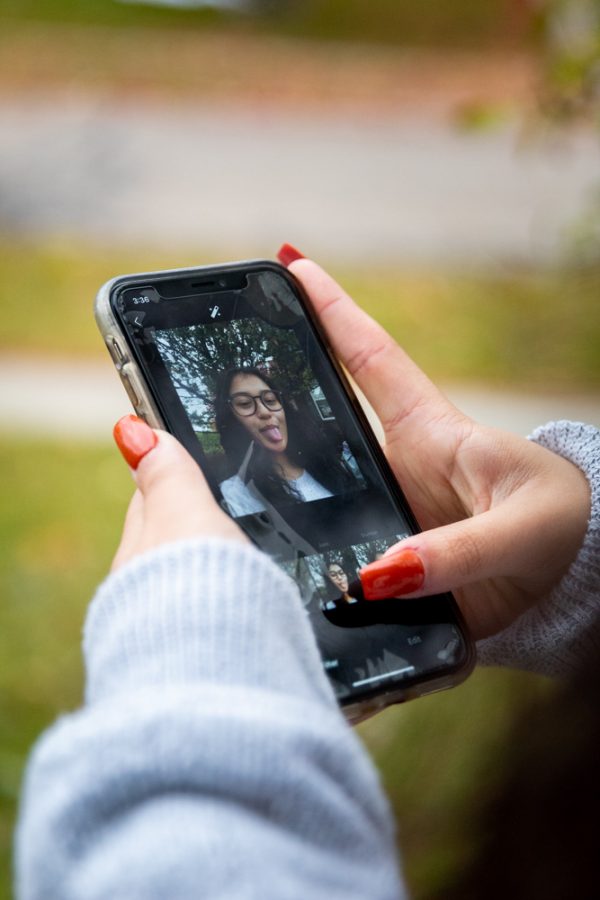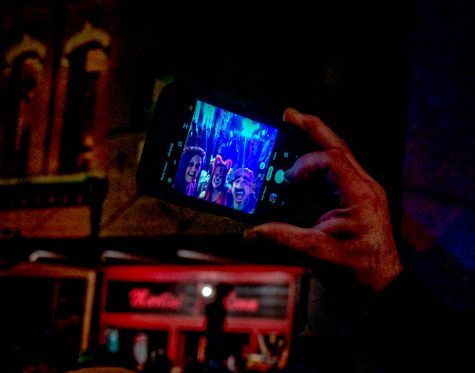Smartphone cameras make photography easier thanks to ease and convenience
Leanne Zshornack loves using her phone to take selfies, and with the help of a friend, full outfit pictures. She uses Instagram to post and share her photos.
Photography has never been easier with the camera we have in our pockets. Smartphones and the cameras attached to them have made snapping photos and videos easier and more convenient than ever.
Smartphones allow all of us to become a photographer. We can argue all the different ways to shoot pictures but we can all agree, whether you’re a student or a staff member on campus, there has never been a more accessible way to take pictures than with your smartphone. Do the accessibility and convenience of smartphone cameras promote quality images or just gives us too many to know what’s true?
“Taking photos is a way to investigate the world,” said Travis Linville, ECC associate professor of photography. “Smartphones are just another tool to ponder about the world we’re living in.”
With that being said, how do the ease and convenience affect the results of those pictures?
“There is some positives and some negatives to these convenience when taking photos and videos,” Linville said. “Again, it allows us to show the world from any point and at anytime, but with the simple maneuvering of the basics for photography, the photo can tell a thousand words.”
The lenses of these smartphone cameras are automatically capturing the best image before you even hit the button. It commemorates the event or object in its best light without much need to work the settings beforehand. The photograph taken is oversaturated and exposed to make it the best version of itself.
“Smartphone photography makes for the best photos to be taken automatically, but gives us a biased shot that isn’t what we as humans see,” Linville said.
ECC students, a majority of who have grown with smartphones, use their devices in a more simplistic and immediate fashion. Amy Brandolino, ECC professor of art history, has noticed a major cultural shift with students’ relationship to taking pictures. spoke about this when comparing her photography class she’s been teaching at ECC for 20 years.
“In a age before smartphones and digital cameras I used to ask ‘Who has taken a photo in the last week?’ and I’d maybe have 1-3 students raise their hands,” Brandolino said. “Now I ask ‘Who has taken a photo in the last hour?’ and the entire class raises their hand-so this medium is definitely evolving.”
With the release of the first iPhone in 2007, the majority of ECC students have grown up in an era where smartphones and smartphone cameras have been ubiquitous, students use this tool in ways that previous generations wouldn’t have thought possible. Some students even use their smartphones to make taking notes an easier process. They take pictures of the lecture slides in the class.
ECC students use their camera in according to the needs of what they’re doing, whether that be taking photos of notes or snapping pictures for precious moments.
“I use my phone everyday, but not my camera… I just [use my camera to] take pictures of notes,” said former ECC student Will Scanlan.
Other students prefer to take pictures of family, friends and group outings that they want to remember.
“I take pictures about three times a week,” said Shaun Casey, a student at ECC. “I take pictures… to serve as a reminder [of]… moments I want to hold onto.”
However, despite the near-daily use of smartphones and smartphone cameras, pictures have not necessarily lost their value. With the ease and convenience of being able to take a picture with the click of a button, some may say that photos don’t mean as much as they once did – but that’s not necessarily true.
“Pictures hold more meaning to me, because I am the one living those memories,” Casey said. “So if I look back on a picture that I took, the happiness of said events come back to me.”

Managing Editor for Elgin Community College's Observer. Started in September 2019 with the Observer. First-semester student at ECC studying for the videography...

My name is Allison Formeller, and I am a staff writer for the ECC Observer. This is my second year at ECC, but my first year on staff. When I transfer,...













